Wood for Making Native American Style Flutes
Wood - what an important subject. There are so many things to know about the woods we use to make a Love flute.
First let's talk about the trees themselves. Any piece of wood I might use to make a Native American style flute is from a tree that was at least one hundred years old. Most hardwood is probably from trees that were a great deal older – hundreds and hundreds of years old. Every tree is itself a manifestation of Great Spirits guidance over millions of years of evolution. The board I hold in my hands is a triumph of sustained effort stretching back to far before the advent of man on this planet. I have always felt that to work with such a material is indeed an honor. When crafted into a Love flute good, hard, properly treated wood will creat an instrument that can last for hundreds if not thousands of years.
I am very aware that the great forests that once covered so much of our planet are disappearing. Most will soon be gone – perhaps never to return to their former glory. I might grieve, but I know that I am not capable of understanding the designs of Great Spirit. I treat each remaining precious piece of wood that comes into my hands with respect. Made into a quality, hand crafter Native American flute the soul quality of a tree may live on long after the last of its kind have fallen to the chainsaw or to a changing climate.
I Waste No Wood.
Wood that does not become part of a Love flute or related object is burned as kindling to start a winter fire in my shop. I will often use wood that has small abnormalities if they will not negatively affect the tone of the Native American flute. In fact I deliberately look for such wood as it often possess superior tonal quality. These abnormalities are rightfully called character flaws. They are not blemishes or detracting elements. Rather, they express the uniqueness of the tree. A character flaw can impart a singular beauty to the wooden Love flute. It expresses the reality that never before has there been such a flute. And, never again will such a unique instrument be made in all of eternity.
Had I the space and finances I would amass a great quantity of Love flute wood. I would probably end up with far more wood than I would ever use in a lifetime. Such is the allure of a beautiful combination of color and grain pattern. But I don’t have that kind of space in my little shop. So I must leave many boards behind in the lumber dealers warehouse. This is hard to do. Often I will see a series of boards from a particular tree. I know that never in this life will I see that same gorgeous composition of color and grain again. Yet I only have space for one of two of those magnificent boards. I can let the others go - knowing, as I do, that Great Spirit will provide other equally wonderful wood when I need it.
The list below of wood types is not exhaustive. I have refrained from judging the different species as to their tonal quality. This is because there is so much variation within each species. Not every piece of wood from a particular species of tree will be ideal for making a quality Native American style flute.
I use many different verities of domestic and foreign hardwoods to make Ancient Territories Native American Style Flutes. I have done research on the different woods that I use to ensure that I (and you) are not involved with wood species that are overly exploited or in danger of extinction. The only woods that seem to be threatened are cocobolo (Dalbergia retusa), blackwood (Dalbergia melanorylon) and ebony (Diospyron crassiflora). Therefore, I do not purchase these woods. A few pieces do come my way from another craftsman. These pieces would otherwise be discarded or burned.
The colors of most Love flute wood darken somewhat with age. This is because light rays and especially ultraviolet rays stimulate a photochemical reaction in the pigments of the wood. With most wood species this takes place so slowly that it is seldom noticed. You may see it when you remove or change the position of the leather band that secures the bird to the flute. Then you may see a lighter color on the covered portion of the wood that was shielded by the leather.
Many of you are not familiar with the different species of wood that you will find in Ancient Territories Love flutes so I am posting pictures of the different flute woods that I use with a brief description of their characteristics.
Types of Wood

Ash
Ash wood is as American as apple pie. It is a medium dense, hard wood with distinctive open pores and grain patterns similar to oak. Ash is a creamy white light colored wood that is easy to work and makes a pretty Love flute.
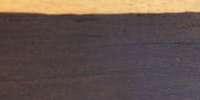 African Blackwood (Dalbergia melanoxylon)
African Blackwood (Dalbergia melanoxylon)
This wood comes from Southern African and Tasmania. It is used extensively in the manufacture of musical instruments such as clarinets. Efforts are made to ensure a continuing supply of this important wood through reforestation and timber plantation management. Blackwood is a dark black color with some dark brown grain. It is relative hard and dense and finishes well. It is very expensive and hard to obtain as almost all the harvest is bought up by the big instrument manufactures.
 African Walnut
African Walnut
This is a nice, dense, close grained hardwood with muted red/brown colors. Grain pattern is more wavy than straight but subtle. When finished it has a lovely luster. Easy to work with and makes an attractive flute. I seldom use it as I prefer American walnut.
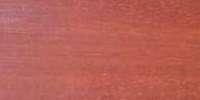 Bloodwood (Brosimum paraense)
Bloodwood (Brosimum paraense)
Also called Satine, bloodwood, as the name infers has a deep red rose color of outstanding beauty. The color does darken somewhat with age, but not noticeably. Bloodwood is a very dense, heavy wood with a tight and straight grain. It is a wood that polishes out to a fine deep finish. When combined with other woods it makes an outstandingly beautiful Native American style flute.
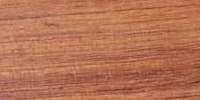
Bubinga (Gubortia demeusii)
Often called African rosewood, Bubinga has deep red/brown colors and a wavy grain pattern sometimes highlighted by dark streaks with purple overtones. This wood darkens somewhat with age. Bubinga is a very hard, dense and heave Love flute wood that takes on a beautiful finish.
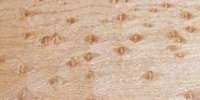
Birdseye Maple
This is not a separate species but an unexplained aberration in the grain pattern of ordinary hard maple (Acer saccharum) that produces small eye like grain structures scattered through out the wood. Its occurrence is quite rare and consequently the wood is expensive. All types of maple are hard, dense, light white to cream colored woods. It makes a very attractive Native American style flute in combination with other woods.

Beech
Beech is a medium dense even grained domestic hardwood. It has a tight grain and its color ranges from tan to medium brown. It is distinguished by tiny, evenly and closely spaced dashes of brown color (called ray flecks) distributed throughout the wood. Beech wood is rather pedestrian in appearance and therefore I seldom use it.

Cherry
American cherry is a medium density wood with a close tight grain with beautiful pink/brown colors that darken with age to a rich russet brown. It has modulated tones of light reflective grain. Cherry is one of my favorite Love flute woods.

Canarywood (Liriodendron tulipifera)
This tree is in the Magnolia family and is also called the tulip tree. It grows in Eastern North America. It is a medium density distinctively grained wood in mixed muted reds and yellows. It takes a great finish. It does not darken noticeably with age. A very attractive Native American style flute wood.
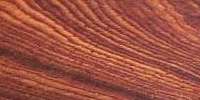
Cocobolo (Dalbergia retusa)
Sometimes called Mexican rosewood, Cocobolo has deep rich orange reds with black and yellow striping in a very distinctive grain pattern. It is considered one of the most beautiful rosewoods in the world. Cocobolo is a very dense, heavy and tight grained wood. The few small pieces that I get I use for the ends of my Collectors Love flutes.
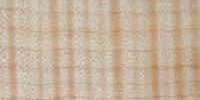
Curly Maple (Acer saccharum)
Maple is a dense, hard, North American wood. Curly maple is an aberration of common maple that has a distinctive light reflecting wavy grain pattern of outstanding beauty. You can gaze at the changing patterns of light reflected through the wood as you turn it in the light for hours. It darkens slowly to a more golden color. Curly maple makes a very beautiful Love flute in combination with other woods.
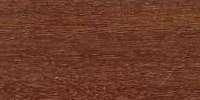
Jarrah
Jarrah is in the eucalyptus family of woods from Australia. It is a dense, close and even grained, slightly coarse wood. The grain patterns are a subtle mixture of dark browns to blacks. Although not a particularly striking grain pattern its an attractive wood that finishes well.
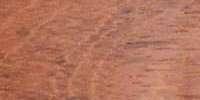
Jatoba (Hymenaea courbaril)
Often referred to as Brazilian cherry because of its color is similar to American cherry (though it is not in the cherry family). The colors of this hard, dense somewhat coarse grained wood range from medium brown to rich orange and reds. I usually choose pieces that have fine black lines running through the wood. A very attractive wood that makes good flutes.
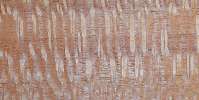
Lacewood (Roopola brasillensis)
A soft to medium dense wood of light to medium brown color from Africa. It is also called leopard wood. lacewood is known for its fascinating lace like grain pattern that is distributed evenly throughout the wood. It makes a beautiful Love flute in combination with other woods.
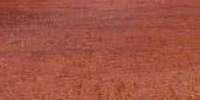
Padauk (Pterocarpus soyauxii)
This is a bright orange wood from South Africa. The orange color darkens with age to an attractive burnt umber. It is a dense but not heavy wood with wavy grain. Padauk is not an easy wood to work with but it's worth the effort. Native American flutes - especially in the key of C and D have a wondeful tonal quality
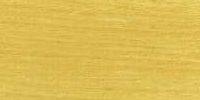
Pau Amarello (Yellowheart)
This is another of the many woods that come from South America. Yellowheart is a medium dense wood with an even, barely distinguishable grain pattern. It is a pale yellow to mustard color that does not change with time. Looks good when used sparingly for its distinctive color.

Purpleheart (Peltogyne paniculata)
This is a very common hardwood from Central and South America known for its amazingly purple color. It has a hard coarse grain with little grain pattern. The color darkens with age. Purpleheart takes a wonderful, smooth finish.
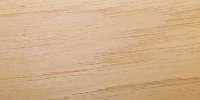
Pecan (Carya illmoensis)
These trees grow in the lower Mississippi valley. Pecan is in the hickory family. It is a hard, dense, somewhat coarse grained wood with champagne and beige coloring. It's a little difficult to work with because the grain tends to splinter and tear. It makes a very nice Native American style flute.
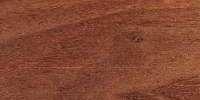
Santos Mahogany (Myroxylon balsamum)
Santos mahogany is one of my favorite woods. More expensive than many the others but worth it. It grows from Central America to Argentina. This is a beautiful, medium density mahogany with reddish brown colors that darken to a beautiful deep red. The figured grain can be straight or wavy with medium to high luster. A very beautiful wood. Love flutes made of Santos mahogany have beautiful, clear, rich tonal qualities.

Walnut
The most sought after of North American hardwoods. Black walnut is a medium dense wood with close pores and tight grain. It is dark brown with blackish/ purple overtones. Not a flashy wood but good looking when contrasted with other woods. I try and obtain boards with distinctive grain patterns. Makes a great Native American style flute - especially in the higher keys like A, G and F#.
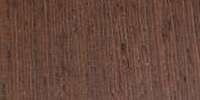
Wenge (Millettia laurentii)
Wenge is an exotic hardwood from Africa. It is a very striking, mostly black wood with fine grey/brown streaks. Its coarse texture and open grain makes it difficult to achieve a good flat finish. I use wenge more as an accent wood rather than in a whole flute.
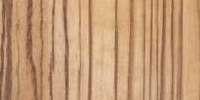
Zebrawood (Microberlina brazzavillensis)
Zebrawood is a coarse textured African wood known for its distinct zebra like stripes of alternating black/brown and cream/tan colors. It makes a wonderfully showy flute. Because of this prized woods rather high price I have to charge alittle extra for Love flutes made from it.
